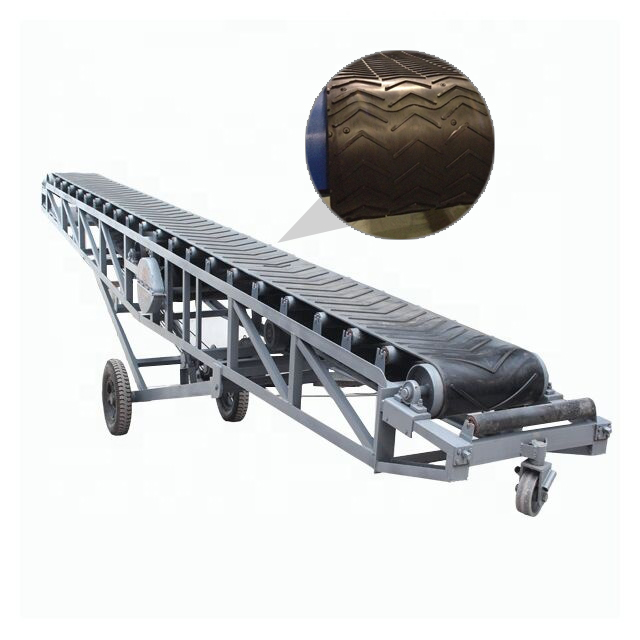Top 5 Myths About PVC Conveyor Belts Debunked
Top 5 Myths About PVC Conveyor Belts Debunked
Blog Article

When it comes to material handling in various industries, conveyor belts play a crucial role in ensuring efficiency and productivity. Among the most popular types of conveyor belts are rubber and PVC varieties, each with their unique strengths and applications. However, despite their widespread usage, various myths and misconceptions have emerged over the years, leading to confusion for those looking to choose the right solution for their needs.
This article aims to clear the air by debunking the top five myths about PVC conveyor belts, alongside discussions about rubber conveyor belts and rubber drive belts. By understanding the facts, businesses can make informed decisions regarding the design, development, and production of these essential materials, ultimately optimizing their operations and enhancing performance. Let’s explore these myths and set the record straight.
Understanding PVC Conveyor Belts
Steel Cord Conveyor Belt Supplier
PVC conveyor belts are widely used in various industries due to their versatility and durability. These belts are made from polyvinyl chloride, a type of plastic that offers excellent resistance to abrasion, chemicals, and moisture. They come in various designs tailored for specific applications, making them suitable for transporting goods in manufacturing, packaging, and food processing environments.
The development of PVC conveyor belts has seen advancements that enhance their performance and longevity. Manufacturers focus on optimizing the design to ensure that the belts can operate effectively in demanding conditions. This includes improving the surface texture for better grip, as well as enhancing the overall flexibility of the belts for smoother operation. As a result, businesses can experience increased efficiency and reduced downtime.
When comparing PVC conveyor belts to rubber conveyor belts, it is essential to consider the specific requirements of each application. Rubber conveyor belts excel in high-temperature environments and offer excellent shock absorption, while PVC belts are typically lighter and more cost-effective for less demanding tasks. Understanding these differences helps industries choose the right belt to meet their operational needs while achieving maximum productivity.
Common Misconceptions
One of the most common misconceptions about PVC conveyor belts is that they are inferior to rubber belts in terms of durability. Many people assume that because PVC is a synthetic material, it cannot withstand the same wear and tear as rubber. However, modern PVC conveyor belts are designed to be highly durable and resistant to various environmental factors. They are engineered to meet specific performance criteria, making them suitable for a wide range of applications in industries.
Another myth is that PVC conveyor belts cannot handle heavy loads. Some users mistakenly believe that rubber drive belts are the only option for heavy-duty applications. In reality, PVC conveyor belts are available in various thicknesses and can be reinforced to support substantial weights. This versatility allows them to be used effectively in both light and heavy load applications, dispelling the notion that they are only for lightweight tasks.
Lastly, there is a belief that PVC conveyor belts are less versatile regarding temperature resistance compared to rubber belts. While rubber belts may perform better in extreme temperature conditions, modern PVC belts can be formulated with additives to enhance their thermal resistance. This innovation allows PVC conveyor belts to perform well in situations previously dominated by rubber, proving their effectiveness in diverse environments without compromising on functionality.
The Role of Design in Conveyor Belt Production
The design of conveyor belts plays a crucial role in their overall functionality and efficiency. When developing PVC conveyor belts, engineers must consider various factors such as load capacity, belt width, and operational environment. Effective design enhances not only performance but also the longevity of the belts, ensuring that they can withstand the demands of rigorous industrial applications.
A well-thought-out design can increase productivity and reduce downtime in manufacturing processes. For rubber conveyor belts, the choice of materials and the geometry of the belt pattern can significantly impact grip and friction, affecting how well the belt transfers materials. Furthermore, incorporating features like tracking guides or cleats can optimize movement and prevent material spillage, which is vital in maintaining workflow efficiency.
The production process of rubber drive belts also relies heavily on innovative design principles. Designers collaborate closely with engineers to ensure that each belt meets specific requirements tailored to its intended use. This collaboration is essential in creating belts that not only perform well under stress but also align with safety standards, resulting in a product that is both reliable and effective in various applications.
Report this page